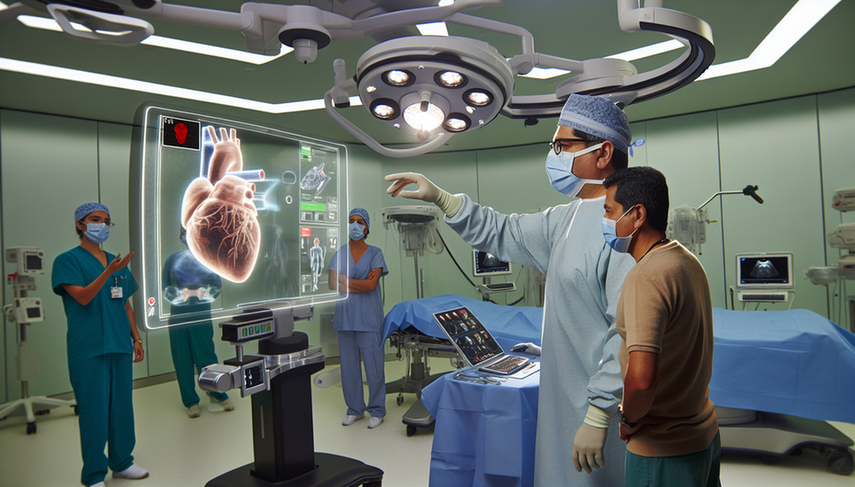Surgery Planning with Augmented Reality: Virtual Guides for Enhanced Diagnostic Accuracy

The surgery planning with augmented reality (AR) is revolutionizing the field of medicine by providing advanced preoperative visualization and virtual guides that enhance diagnostic accuracy. This technology allows surgeons to visualize complex anatomical structures in a three-dimensional environment, facilitating more precise and personalized surgical planning. The integration of AR into surgical practice not only improves the accuracy of procedures but also optimizes clinical outcomes and reduces the risk of complications.
Diving Deeper into Augmented Reality in Surgery
AR has been successfully implemented across various surgical specialties, from dental surgery to neurosurgery. A recent study demonstrated how AR, combined with artificial intelligence, can enhance dental implant planning by allowing authentic 3D visualization without the need for conventional radiological software. This approach has proven to be effective and time-efficient for simple guided implant surgery cases [1].
In the realm of neurosurgery, AR has been utilized to improve preoperative visualization and intraoperative navigation in complex procedures such as the correction of metopic craniosynostosis. The combination of hybrid physical models and AR applications has proven to be a valuable educational tool, enhancing anatomical understanding and operational strategy [2].
Furthermore, in hepatic surgery, AR has enabled the three-dimensional reconstruction of hepatic and biliary structures, overlaying virtual images onto the real surgical field. This assists surgeons in visualizing intrahepatic structures, improving navigation during complex surgical procedures [3].
Conclusions
The integration of augmented reality in surgical planning represents a significant advancement towards more precise and personalized surgery. The virtual guides provided by AR not only enhance diagnostic accuracy but also optimize patient safety and surgical outcomes. As technology continues to evolve, we are likely to see broader adoption of these tools across various surgical specialties, transforming the way we plan and execute surgeries.
Referencias
- [1] Artificial intelligence and augmented reality for guided implant surgery planning: A proof of concept
- [2] Augmented reality and physical hybrid model simulation for preoperative planning of metopic craniosynostosis surgery
- [3] Augmented reality technology for preoperative planning and intraoperative navigation during hepatobiliary surgery: A review of current methods
Created 24/1/2025
